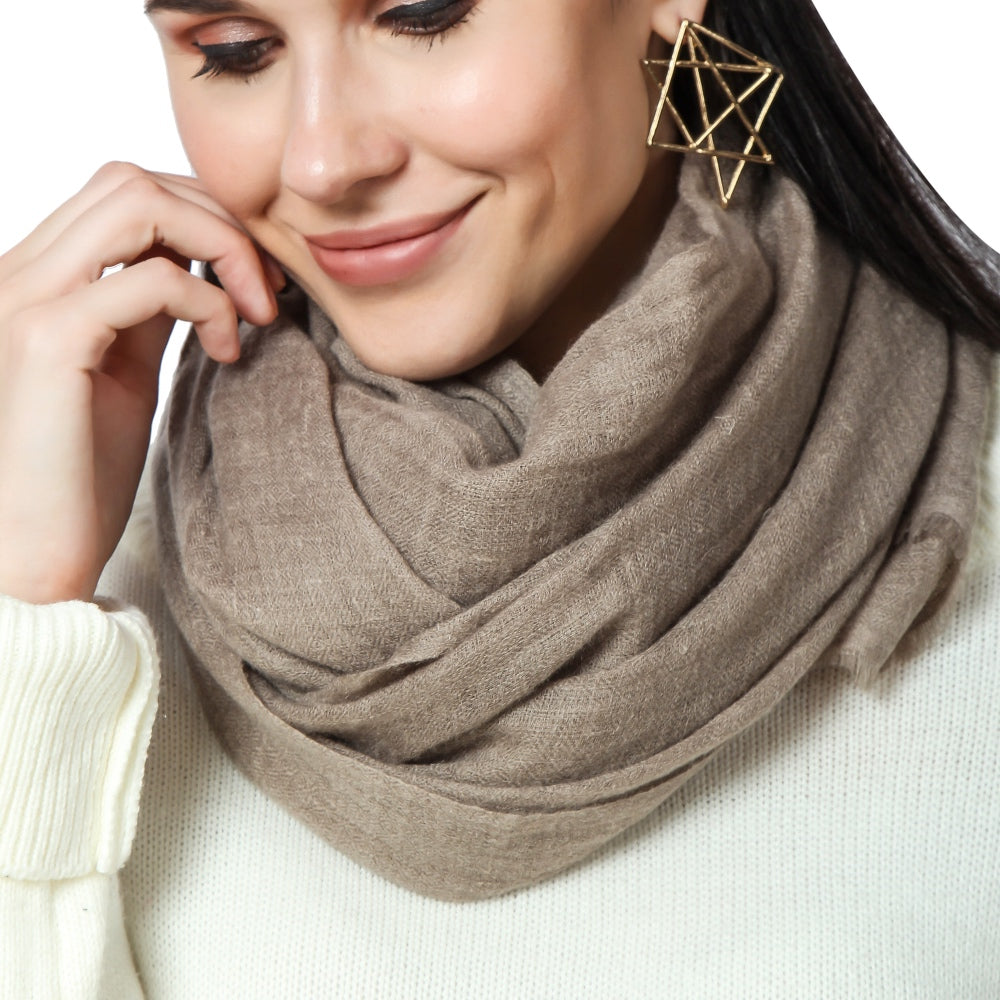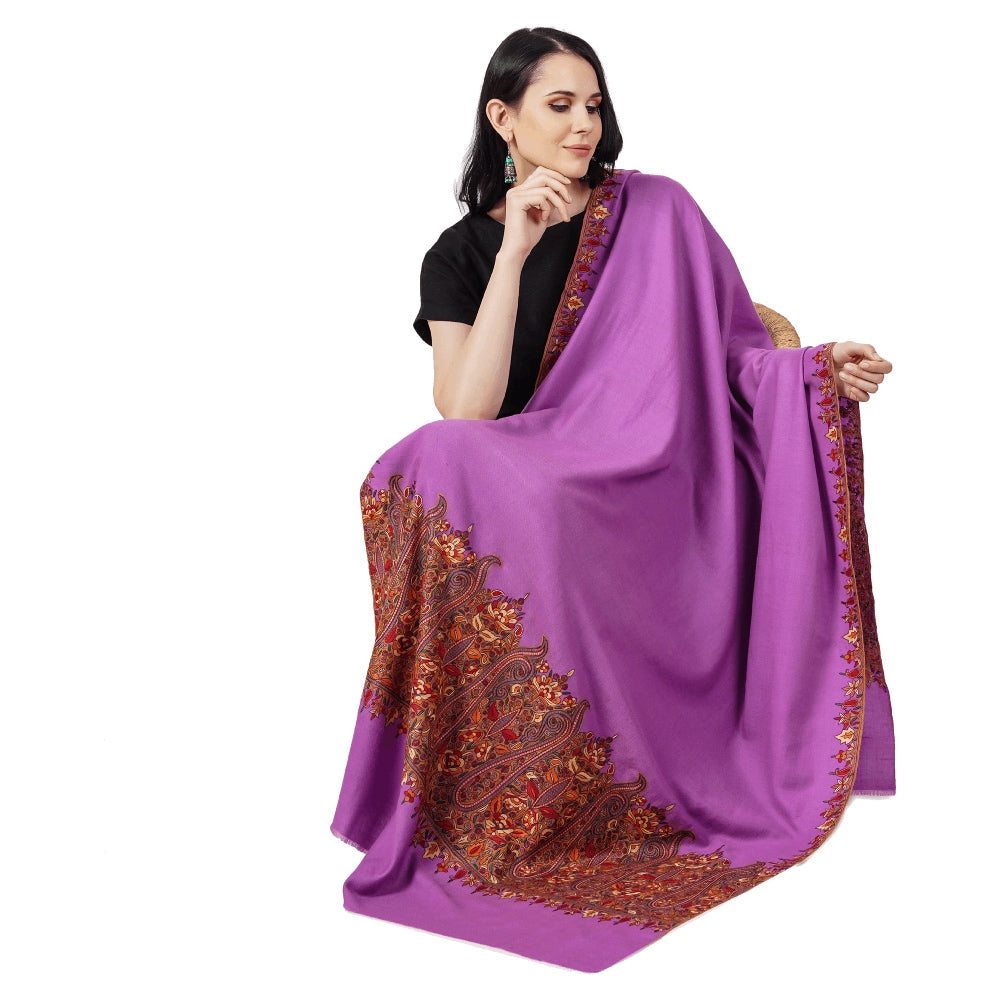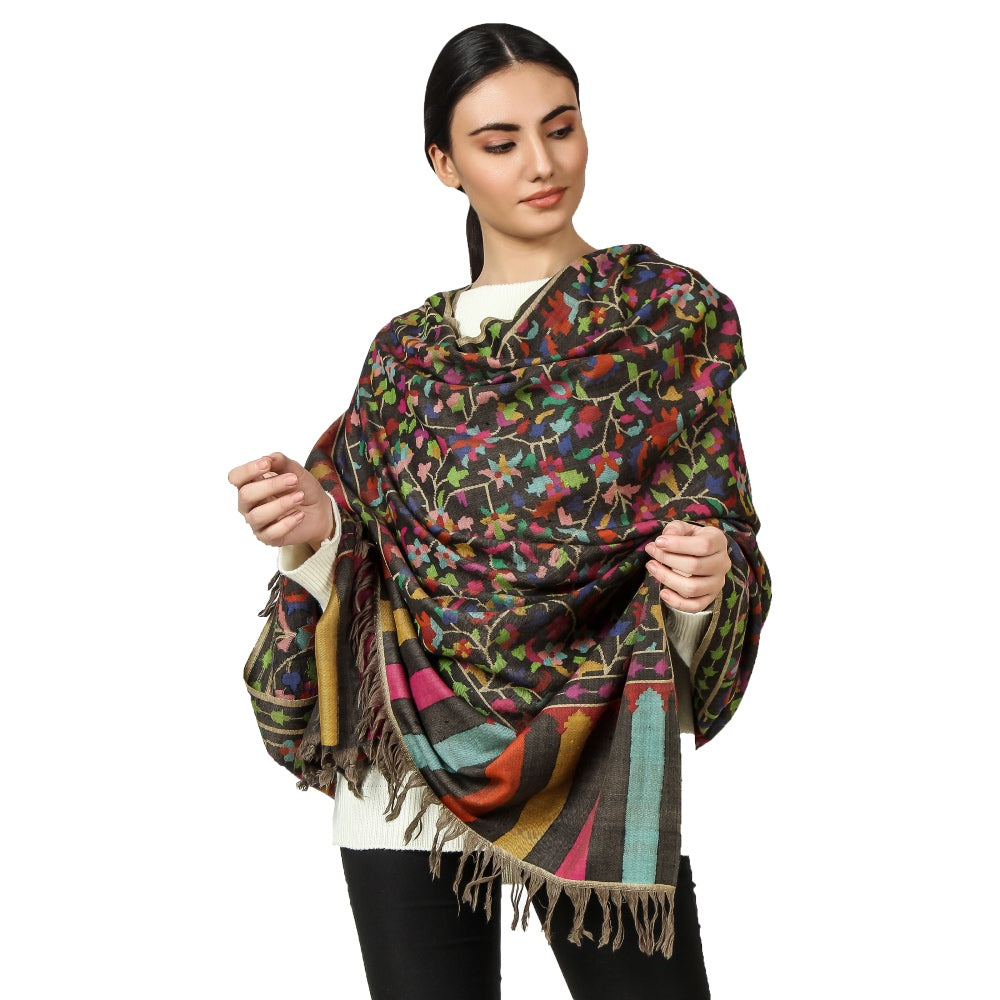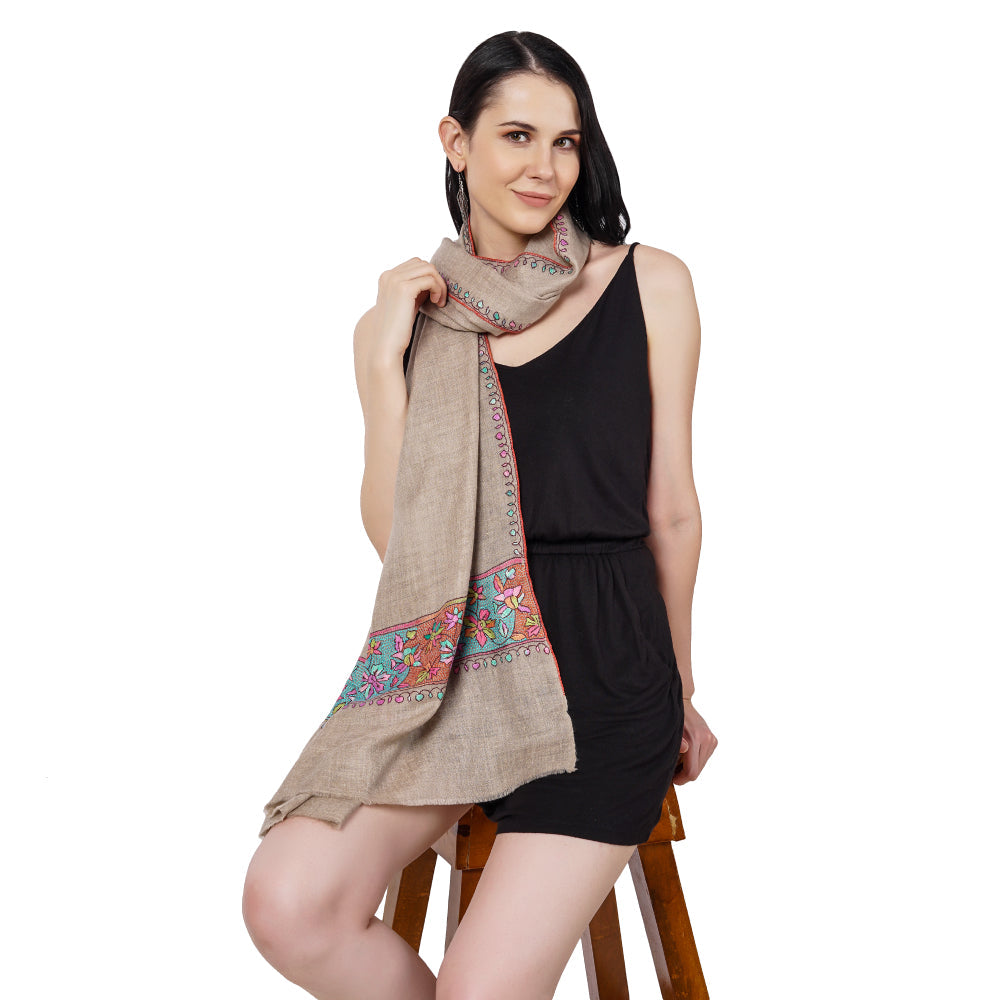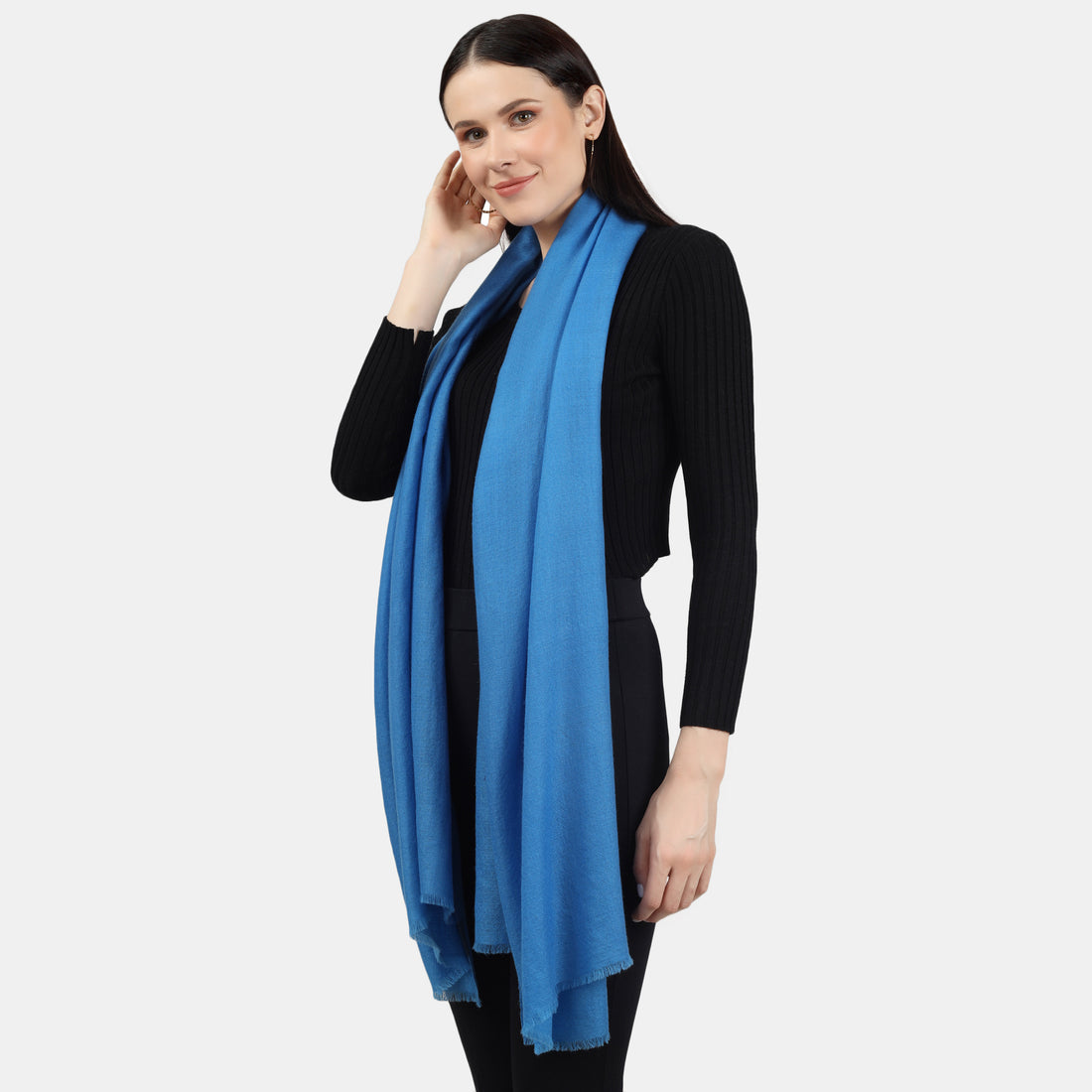
What is the most expensive Cashmere?
Share
Cashmere is a luxurious and soft wool fiber that is highly prized for its warmth, softness, and durability. It comes from the undercoat of cashmere goats, which are bred in regions with harsh climates such as the Himalayan region of Ladakh, Inner Mongolia, and Scotland. Cashmere has been a highly coveted material for centuries due to its incredible softness and warmth, and it has been used to make clothing items such as scarves, sweaters, and blankets. Despite its popularity, the cost of cashmere can vary greatly, and it is often regarded as one of the most expensive fibers in the world. The price of cashmere is determined by various factors, including the quality of the fiber, the rarity of the type of cashmere, the length and thickness of the fibers, and the production process and location. As such, consumers can expect to pay a premium price for high-quality, sustainably produced cashmere items.
Also read: Which is the most expensive wool in the World
Cashmere quality grades

Cashmere is a luxurious and highly sought-after natural fiber used in the production of premium garments and accessories. The grading system for cashmere is a way of categorizing the quality of the fiber based on its fineness, length, and color. The cashmere grading system typically ranges from Grade A to Grade C, with Grade A being the highest quality and Grade C being the lowest.
Grade A cashmere: is the finest and most sought-after type of cashmere. It has a diameter of 19 microns or less, making it incredibly soft and lightweight. The fibers are also long and uniform in length, which makes them easier to spin into fine yarns. Grade A cashmere is typically reserved for high-end products such as designer garments, luxury accessories, and high-quality blankets.
Grade B Cashmere: is slightly coarser than Grade A and has a diameter of between 19 and 22 microns. While it may not be as soft as Grade A, it is still considered to be of high quality and is suitable for a wide range of garments and accessories. Grade B cashmere is often used to make high-end sweaters, scarves, and shawls.
Grade C Cashmere: is the lowest quality and has a diameter of more than 22 microns. The fibers are shorter and thicker, making them less soft and luxurious than Grade A and Grade B. However, Grade C cashmere is still suitable for many types of garments and is often used to make less expensive products such as hats, gloves, and blankets.
Several factors can affect the quality of cashmere, including the age and breed of the goat, the region in which the cashmere is produced, and the processing methods used. Younger goats produce finer and softer fibers than older goats, and certain breeds are known for their high-quality cashmere. The region in which the cashmere is produced can also have an impact on its quality, with some regions known for producing particularly fine fibers. Finally, the processing methods used can affect the quality of the fiber, with high-quality cashmere being processed using gentle methods that preserve the natural softness and luster of the fibers.
Also read: What you need to know about Cashmere before you buy it
Types of cashmere
Himalayan Cashmere

Himalayan Cashmere comes from cashmere goats that are bred in the high-altitude regions of Ladak region of Kashmir in India. It is known for its exceptionally soft texture and warmth, thanks to the harsh weather conditions that the goats have to endure. Himalayan cashmere is typically considered to be of the highest quality, with fine and long fibers that can be as thin as 13 microns in diameter. Due to its rarity and high quality, Himalayan cashmere is one of the most expensive types of cashmere on the market.
Inner Mongolian cashmere

Inner Mongolia Cashmere comes from cashmere goats that are raised in the Inner Mongolia region of China. It is known for its warmth and durability, with fibers that are slightly thicker than those of Himalayan cashmere. Inner Mongolian cashmere is typically considered to be of high quality, and it is often used to make high-end clothing items such as sweaters and coats.
Italian cashmere

Italian Cashmere is another high-quality type of cashmere, known for its softness and luxurious texture. It comes from cashmere goats that are bred in Italy, and it is highly valued for its superior quality and craftsmanship. Italian cashmere is often used to make high-end clothing items such as scarves and sweaters, and it is typically priced at the higher end of the cashmere market.
Scottish cashmere

Scottish Cashmere is known for its durability and warmth, with fibers that are thicker than those of Italian or Himalayan cashmere. It is made from cashmere goats that are raised in Scotland, where the harsh weather conditions help to produce thick, warm fibers. Scottish cashmere is often used to make traditional Scottish clothing items such as kilts and tartan scarves.
In terms of price and quality, Himalayan cashmere is typically the most expensive and highest quality type of cashmere, followed by Italian and Inner Mongolian cashmere. Scottish cashmere is generally less expensive than the other types but is still considered to be of high quality. When purchasing cashmere, it is important to consider factors such as quality, purity, and sustainability to ensure that you are getting a high-quality product that is worth the investment.
Also read: Which Country produces the best quality Cashmere.
Factors that affect cashmere prices

Rarity of the cashmere type
The rarity of the cashmere type is a significant factor that can affect its price. Certain types of cashmere, such as Himalayan cashmere, are rarer and more difficult to obtain, which makes them more expensive. This is due to the limited supply of the fibers, which means that only a small amount of cashmere can be produced each year. Rarity also contributes to the exclusivity and prestige of the product, which can further drive up its price. In contrast, more common types of cashmere, such as those produced in China or Italy, tend to be less expensive due to their wider availability.
Length and thickness of the fibers
The length and thickness of the cashmere fibers also play a crucial role in determining its price. Longer and thinner fibers are generally considered to be of higher quality, as they produce a softer and more luxurious texture. This is because longer fibers can be spun into a finer yarn, which results in a more delicate and lightweight fabric. As such, cashmere with longer and thinner fibers is typically more expensive than cashmere with shorter and thicker fibers.
Purity of the fibers
The purity of the cashmere fibers is another key factor that can impact the price of cashmere. High-quality cashmere should be 100% pure, with no other fibers or materials blended in. Cashmere that has been blended with other materials, such as wool or silk, is considered to be of lower quality and is typically less expensive. This is because blending cashmere with other fibers can affect its softness, warmth, and durability, which can reduce its overall value.
Production process and location
Finally, the production process and location of the cashmere can also affect its price. Cashmere that is produced in a sustainable and ethical manner, using traditional methods and craftsmanship, tends to be more expensive than cashmere that is produced using industrial methods. Similarly, cashmere that is produced in regions with higher labor costs, such as Europe or the United States, tends to be more expensive than cashmere that is produced in regions with lower labor costs, such as China or Mongolia. As such, consumers should consider these factors when purchasing cashmere to ensure that they are getting a product that is both high-quality and ethically produced.
Also read: How can you tell if Cashmere is real?
Conclusion
In conclusion, the cost of cashmere can vary significantly depending on a range of factors. Cashmere quality is graded based on factors such as fiber length, thickness, and purity, with higher grades being associated with higher quality and more expensive products. Different types of cashmere, such as Himalayan, Inner Mongolian, Italian, and Scottish, also vary in price and quality. The rarity of the cashmere type, the length and thickness of the fibers, the purity of the fibers, and the production process and location are all factors that can affect cashmere prices. While rare and high-quality cashmere tends to be more expensive, consumers should also consider factors such as sustainability and ethical production when purchasing cashmere products. Overall, by understanding the factors that affect cashmere prices, consumers can make informed decisions about purchasing high-quality cashmere products that are both luxurious and ethical.

